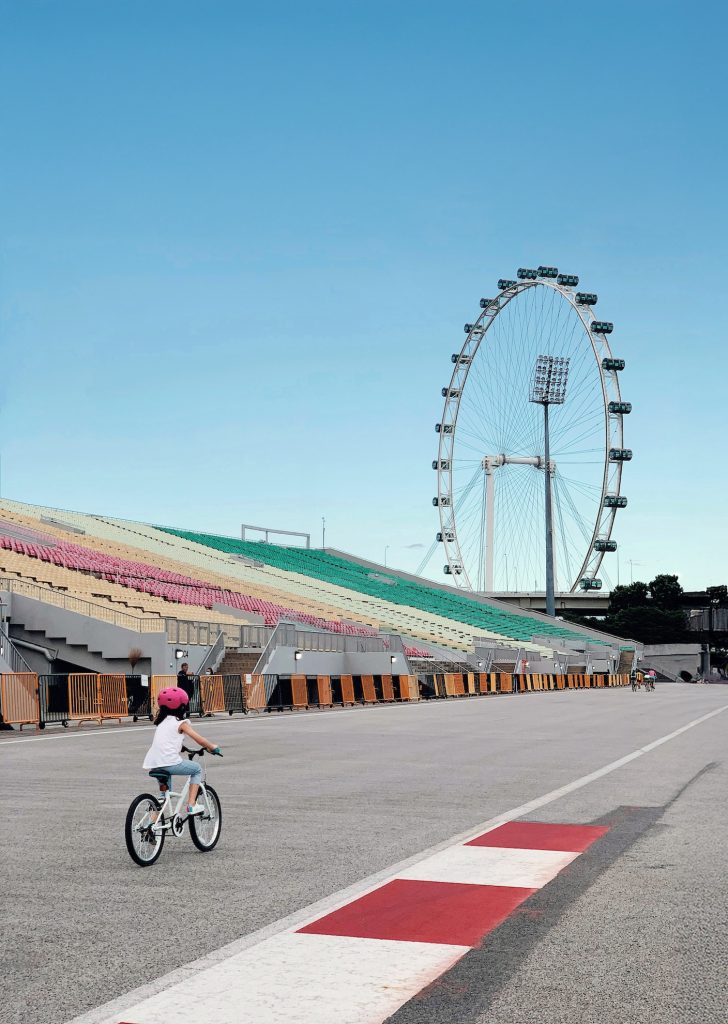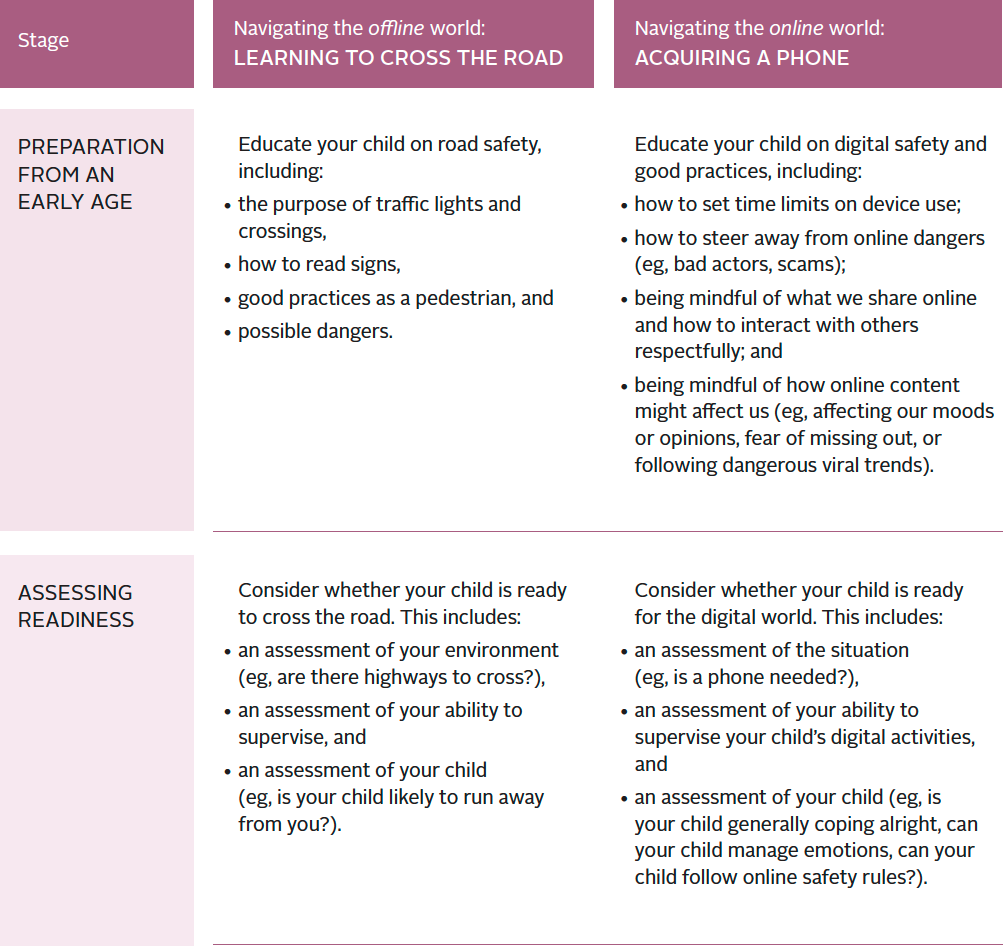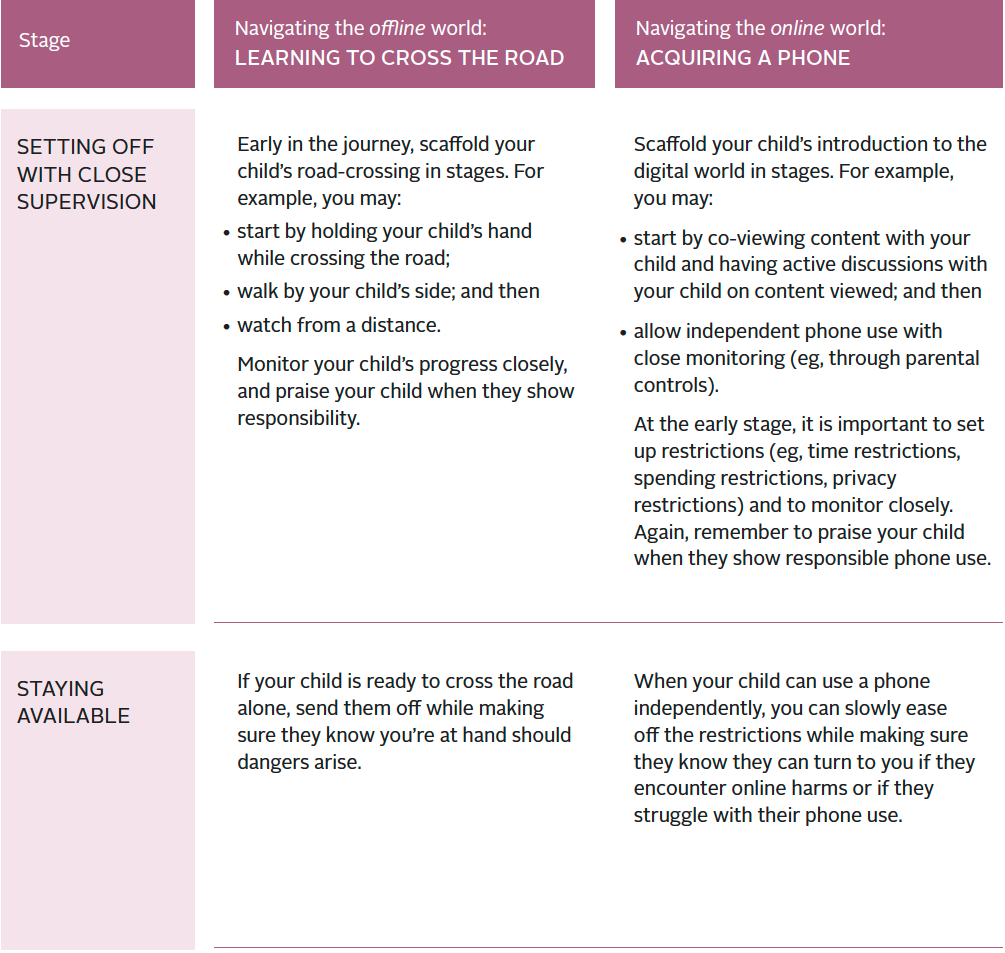Let’s indulge in a thought experiment. An alien lands in Singapore on a mission: to understand the rules of how children and adolescents interact with digital devices. Very quickly, our extraterrestrial visitor might grow perplexed.
On the one hand, Singapore has an unmistakable narrative of technological advancement. The country describes itself as a “Smart Nation” where digital tools are deployed as part of public policy. Singapore also aspires to be Asia’s Silicon Valley, frequently recounting success stories of homegrown technological companies such as Razer, Grab, Shopee, or Secretlab.
Echoing these ambitions, it is common for parents to enrol their children in coding or robotics courses even before they start formal schooling. Each year, more than 2,000 students participate in the National Robotics Competition, with categories open to children as young as five.
Children engage with interactive exhibits and multimedia displays at the Singapore City Gallery, which showcases the nation’s urban evolution and future development plans.
Source: Urban Redevelopment Authority (URA)
For the curious onlooker, a natural conclusion would be that digital technologies and devices are celebrated in Singapore and that children would embrace them from a young age.
For the curious onlooker, a natural conclusion would be that digital technologies and devices are celebrated in Singapore and that children would embrace them from a young age. On the other hand, a contrasting narrative quickly emerges — one that advises children and adolescents to hold back from device use.
In 2025, the Ministry of Health announced screen use guidelines for children aged 0 to 12. This guidance recommends no screen time for infants under 18 months, less than an hour daily for preschoolers, and under two hours for those in primary school.
This year, parliamentary debates also focused on whether social media should be banned in Singapore — echoing Australia’s recent restrictions for persons under 16. The Singapore government responded that it was in discussions with Australian counterparts and was considering the merits of a ban.
From this second set of initiatives, the onlooker would be forgiven for thinking that Singaporeans are seeking to manage or avoid the use of digital devices among children and adolescents.
Caught between the conflicting narratives of embracing or avoiding digital devices, every Singaporean family must make real-life decisions on whether and how to introduce these devices to their children.
And two common metaphors often emerge from this dilemma.

Smart Nation PlayScape, a permanent exhibition at Science Centre Singapore, explores emerging tech like AI, robotics, and blockchain through hands-on zones for visitors aged 10 and up.
Source: Smart Nation
The reality is that isolating ourselves from the digital world is not easy. Banning children from devices does little to prepare them for this eventual reality.
OPENING PANDORA’S BOX
Some parents perceive the online world as a Pandora’s Box. It is full of peril that, once uncovered, will wreak havoc impossible to contain.
Parents who hold this view perceive the online world as rife with disinformation and disturbing content. They warn of how device use negatively affects mental health and blame youth struggles on constant device usage.
After all, the online world is the venue where cyberbullying takes place. It is a platform where adolescents share their lives publicly and measure themselves against others. A place where they feel inadequate and their insecurities magnified. In the Singaporean context, devices are also seen as distractions, pulling young students away from the productivity our local education system expects.
These worries about digital devices are best encapsulated in popular books such as Jonathan Haidt’s The Anxious Generation and, most recently, the psychological crime drama Adolescence. They remind parents that when children are left to their own digital devices, they are not safe.
However, this analogy falls short in two ways. First, while scientific research shows how digital devices can indeed have negative effects, these impacts are less significant than developmental factors such as warm parental relationships or effective conflict management. Many challenges we pin to digital devices — such as bullying or ‘time wastage’— also existed before the internet. These are struggles that parents of every generation have grappled with, and blaming digital devices can lead us to overlook the more complex tasks of nurturing family dynamics and managing lifestyle factors.
Second, our children will eventually become adults who regularly use digital devices in everyday life. In Singapore, the average adult is likely to use their phone to navigate, tap themselves in and out of the bus, use PayNow to buy lunch, and rely on computer software for work. The reality is that isolating ourselves from the digital world is not easy. Banning children from devices does little to prepare them for this eventual reality.
A digital device is not a Tamagotchi. It is not passive and self-contained but instead provides a portal to a vast online world.

OFFERING A TOY TAMAGOTCHI
An alternative view comes from parents who treat devices as if they were benign toys — akin to a Tamagotchi given as a reward. We often tell our children, “You’ll get a phone for your birthday,” or more commonly, “Work hard for the PSLE and you’ll get a phone.”
Beneath this approach lies an acknowledgement that phones now play a key role in children’s socialisation and development. With many school children owning a phone, those who do not may feel excluded.
Digital devices thus become gifts offered as children grow up. Once given, children are also expected to manage them independently — like a pet Tamagotchi.
But a digital device is not a Tamagotchi. It is not passive and self-contained but instead provides a portal to a vast online world. Even if we do not unleash Pandora’s Box, there remain real dangers that require preparation and vigilance.
LEARNING TO CROSS THE ROAD FOR THE FIRST TIME
As an alternative analogy, we suggest that acquiring a phone should be framed as a rite of passage — similar to how we navigate the offline world. It is a journey every child must undertake, but one where guidance is essential.
Do you remember when you were first allowed to cross the road or take public transport independently? Did you walk out of the door unprepared, or did you progress in stages? Did you start your journey at the same time as your peers?
The questions surrounding device ownership should mirror everyday parenting dilemmas: when to let children cross the road, hang from monkey bars unsupported, or participate in playground negotiations. Parents view these milestones not as intrusions into their children’s lives that must be postponed indefinitely, but as essential parts of growing up, where scaffolding is required.
In the offline world, parents teach road safety step-by-step: first talking about dangers and road-crossing procedures, then guiding children while holding hands, before eventually watching from a distance. Their approach varies depending on circumstances — a child in a quiet neighbourhood has more leeway than one on a busy road.
In a similar vein, our children must show readiness and responsibility before being granted digital freedom. Rather than pinpointing an exact numerical age for phone ownership, we might ask ourselves: how can we help our children prepare, build resilience, and acquire digital literacy to be ready for the digital world?

The questions surrounding device ownership should mirror everyday parenting dilemmas: when to let children cross the road, hang from monkey bars unsupported, or participate in playground negotiations.
Even when children seem prepared, the work is not done. We mustn’t send them into the online world alone; instead, we should guide their entry; first with close supervision and then from a distance — always remaining available should dangers arise.
Just as we alert our children to rare but dangerous encounters in the offline world, we should also warn them about potentially dangerous encounters online. And then, with guidance and support, we must allow them to venture forth — free to explore, make mistakes, and ultimately, to thrive in the online world.
As the poet E E Cummings reminds us, “It takes courage to grow up and become who you really are.” In this digital age, preparing our children with the right skills will give them the courage to discover their authentic selves and take flight. ∞
PRACTICAL TIPS
Just like how we teach our children to cross the road, we should introduce them to devices in steady steps.


JEAN LIU
Dr Jean Liu is a Director at the Centre for Evidence and Implementation, and an adjunct Assistant Professor at Duke-NUS Graduate Medical School and the Yong Loo Lin School of Medicine. Her research focuses on how digital devices impact health and social relationships. To date, she has published over 30 papers on topics like phone usage during meals and how social media relates to mental health. Dr Liu has served as a consultant to the World Health Organization and is now a Council Member for the Agency for Care Effectiveness, an expert panellist for the Health Promotion Board, and a board member for several non-profits. Her research insights have been discussed in parliament, and she speaks frequently in the media.
EUCLEA TAN
Euclea Tan is a Research Assistant at the Centre for Evidence and Implementation. Her background and interests lie in social relations and justice, and she aspires to make research more equitable and accessible.

AUGUST 2025 | ISSUE 14
SCREENS BETWEEN US






